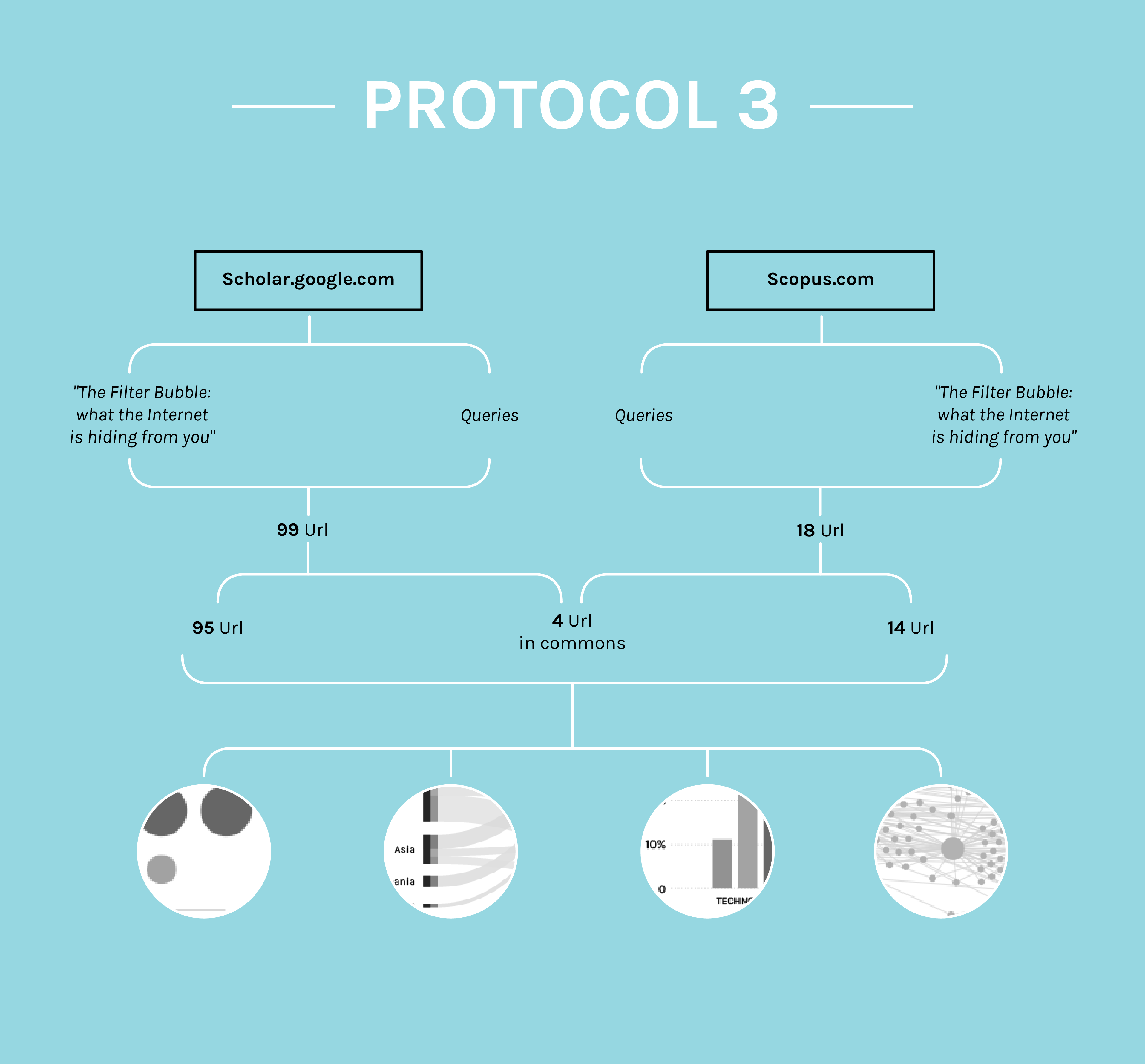Introduction
Using the queries of Protocol 1 on Google, among the proposed results there were always a special section, at the top of the page, where academic results were shown. Since that, we wondered if the debate was also discussed in this area and therefore it was recognized as real. We went to investigate among the academic circles, using as primary sources of aggregators of information two search engines recognized by the scientific community: Google Scholar and Scopus.
Besides the use of the queries of protocol 1, we decided to use even the papers which cited the text which named the dispute “Filter Bubble” in 2011 with the publication of "The Filter Bubble: What The Internet Is Hiding From You”.
To analyze completely the discussion, it was decided to categorize documents according to some aspects like title, authors, year, location continent, article typology (proposal or research), university fonts, cited by and topic.
Then were made four graphs:
- the first one shows how the topic increased in a significant way since 2011 and how academic started to talk in context of society and technology, and how the red dots (against the web personalization), in recent years are becoming increasingly present
- the second one shows different types of analysis of the dispute, divided by pro, con and neutral positions, by continent and by typology: research, proposal, case study, book, research with proposal, research with case study and at least research with case study and proposal. In this there’s an appendix in which we wanted to highlight the position of case studies.
- the third shows the analysis between the thematic areas of technology, society, privacy, information and others (psychology, philosophy, politics, marketing) and the quantity of pro, con and neutral position in every area.
- the last one shows the different position about the Web Personalization of the papers we analyzed. We decided to try to map them by starting from the one with a much more defined position in the debate. The highlighted dots define the papers with most explicit position about our research question, while all the grey dots are all the rest of the papers, connected in relation of how many times they cite themselves. It is possible to see where all these papers are positioned in the debate, like for example we see that there are much more papers in the middle-moderate area.



